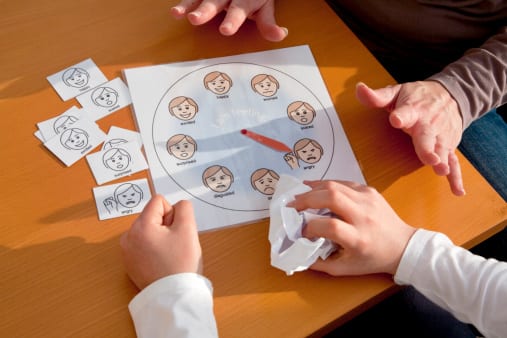How autistic kids deal with a “high engine”
While at school, your autistic child spends approximately four to six hours working hard in many ways. They follow school rules, concentrate on their schoolwork, deal with overstimulating environments, try to interact with other children, and, meanwhile, spend the entire time trying to balance or regulate their bodies.School is a lot to handle for our kids.
Frequently, my child comes home and has to immediately unwind. He has just spent a large amount of time during the day trying to keep his balance, or as he likes to call it, “Keep my engine okay.” By the time my child gets home, he needs a break.
I remember a story told to me by my child’s former DTT supervisor. She said, “I went to a conference. One class at this conference was taught by a man who was on the autism spectrum himself. He told us the first thing he does when he arrives home every night is immediately sit in a rocking chair in his living room and rock for 20 to 30 minutes. He said he had to do this to regulate his body. The stress of keeping himself under control all day needed to be relieved the moment he was in his own home.”
Temple Grandin built herself a machine that actually would press her body. She would slip into the machine and say “pressed” for as long as it took for her body to calm down.
I think of these things when I watch my child run his laps in our backyard and make his “funny noises.” Or when he rides his Razor back and forth, back and forth. Or when then he jumps on his trampoline for 20 minutes. He’s regulating himself.
How do I handle a child who needs to regulate his body?
At home, I allow these breaks.. He needs it and this is his home. Why not?
If he’s just come home from several hours at school or from an event or from anything that required him to restrain himself, he needs this time. During those times, he often isn’t allowed to or gets limited opportunities to regulate himself.
He doesn’t get any opportunities at school?
Of course he does. My child has a school aide and is allowed to communicate with her about his engine running high (meaning he has a need to regulate his body).
His breaks are typically five minutes long.
The problem at school is coordinating his breaks to make it fair to his class, fair to his teacher, and fair to his own studies. What I mean is our child’s breaks cannot always occur according to his immediate needs. Or his whims.
In the past, our child has asked for a break after having just returned from one. We have sometimes felt he has done this in the past to try to get out of doing something uncomfortable. He has used his permission to take breaks and used that permission to his advantage.
The teacher and the aide, therefore, need to coordinate the best time for our child’s regulation breaks. It is a time that works best for my child, the teacher, and the entire class.
What about at home?
As I already stated, home is a different story. My child can more or less regulate himself. The breaks, however, are not always as long as he wants at home, either.
Typically, I will give my child a fair amount of time to regulate himself. Then I’ll find a reason to interrupt him. I will ask him to switch activities. I’ll ask him to walk the dog with me. Or I’ll do something to get him to cut himself off from over-regulating himself.
Keep in mind, however, that I want my child to regulate his body. I understand the need for him to “lower his engine.” So I have to balance his… balancing.
But I do believe even doing his regulating can become a problem if it lasts too long. It can become… an obsession. What are the time limits for regulation breaks? How long is too long?
His time at school is five minutes. At home, I believe even ten minutes is too short. What about an hour? Or two hours? We typically settle on thirty minutes at a time. He often doesn’t use the entire thirty minutes. Or we figure a trip around the block on his Razor is about thirty minutes. He’s often de-regulated by the time we get home.
How else can you help your child?
Don’t forget to interact with your child regarding their regulation periods. We will talk to our child while he’s doing his activities. This way, we’re forcing him to interact with us. He’s working out two things at once.
What exactly should you do?
Approaching regulation breaks is similar to how we approach our child’s obsessions. We’ve spent years working on this strategy of making sure our child doesn’t get lost for extended periods of time for too long. This includes when he’s at school, out in the world, or at home.
This is not an exact science. We do, however, try to maintain a balance. We give our child some time to himself when he needs to regulate his body (especially when he’s home). We also give him time for the computer, TV, games, or anything else that he enjoys.We balance that with vacations and outings and other experiences. And, during all of this, we are aware of time limits.
We simply try to maintain a balance.Which is not all that hard for our kids. They love structure. They seek it out. They want structure wrapped around their obsessions, which includes maintain their bodies.
All we do is try to keep on the same page with our child. While making sure we don’t stray too far from being responsible parents.





